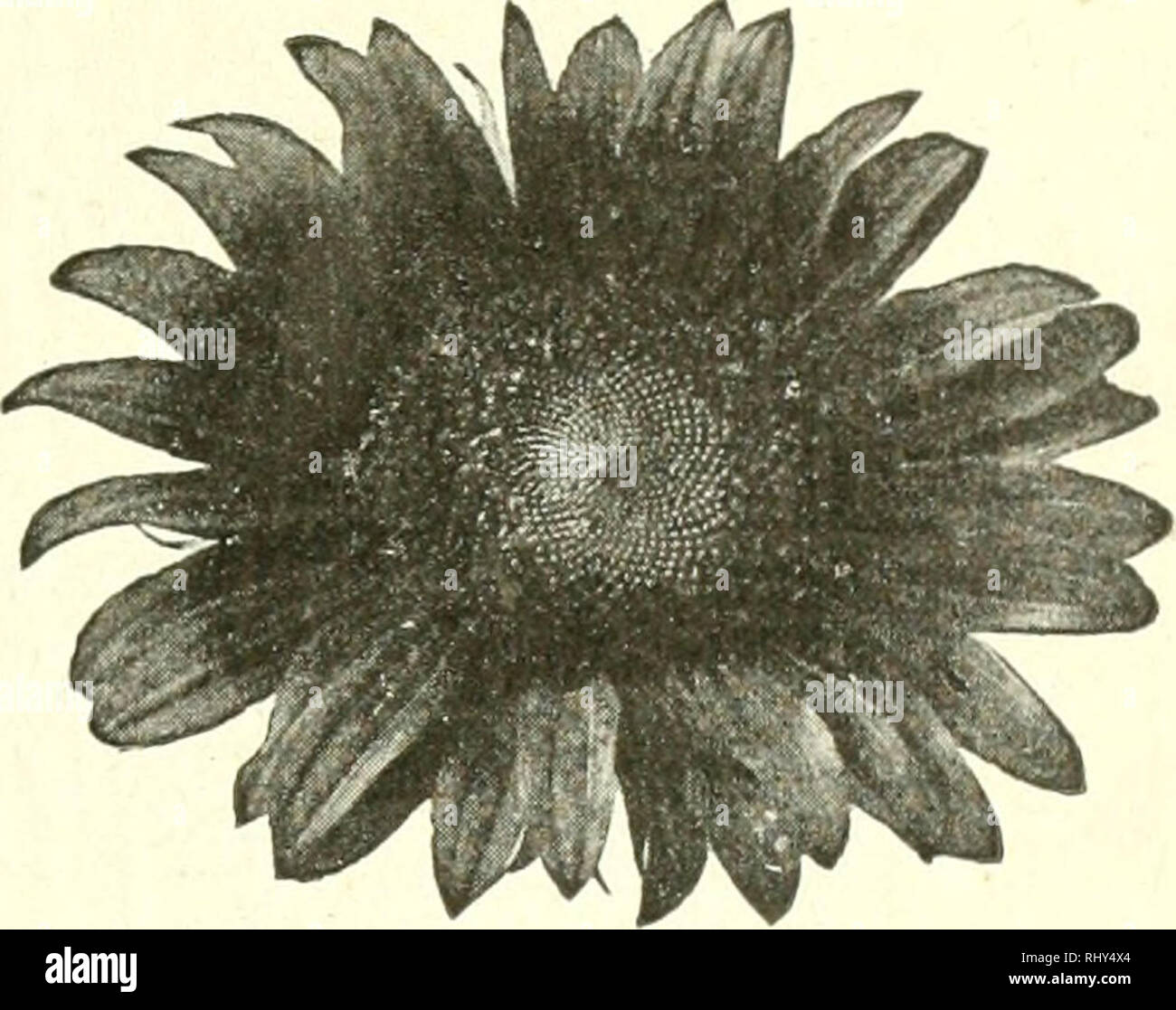. Beginners botany. Botany. THE FLOWER —ITS PARTS AND FORMS 141. Fig. 189. — Head of Sunflower. florets are inclosed in a more or less dense and usually green involucre. In the thistle (Fig. 190) this involucre is prickly. A longitudinal section discloses the flo- rets, all attached at bot- tom to a common torus, and densely packed in the involucre. The pink tips of these florets con- stitute the showy part of the head. Each floret of the this- tle (Fig. 190) is a com- plete flower. At a is the ovary. At (^ is a much-divided plumy calyx, known as the pappus. The corolla is long- tubed, rising

Image details
Contributor:
Library Book Collection / Alamy Stock PhotoImage ID:
RHY4X4File size:
7.1 MB (293.7 KB Compressed download)Releases:
Model - no | Property - noDo I need a release?Dimensions:
1777 x 1405 px | 30.1 x 23.8 cm | 11.8 x 9.4 inches | 150dpiMore information:
This image is a public domain image, which means either that copyright has expired in the image or the copyright holder has waived their copyright. Alamy charges you a fee for access to the high resolution copy of the image.
This image could have imperfections as it’s either historical or reportage.
. Beginners botany. Botany. THE FLOWER —ITS PARTS AND FORMS 141. Fig. 189. — Head of Sunflower. florets are inclosed in a more or less dense and usually green involucre. In the thistle (Fig. 190) this involucre is prickly. A longitudinal section discloses the flo- rets, all attached at bot- tom to a common torus, and densely packed in the involucre. The pink tips of these florets con- stitute the showy part of the head. Each floret of the this- tle (Fig. 190) is a com- plete flower. At a is the ovary. At (^ is a much-divided plumy calyx, known as the pappus. The corolla is long- tubed, rising above the pappus, and is enlarged and 5-lobed at the top, c. The style pro- jects at e. The five anthers are united about the style in a ring at d. Such anthers are said to be syngenesious. These are the various parts of the florets of the Com- positae. In some cases the pappus is in the form of barbs, bristles, or scales, and sometimes it is wanting. The pappus, as we shall see later, assists in distributing the seed. Often the florets are not all alike. The corolla of those in the outer circles may be developed into a long, straplike, or tubular part, and the head then has the ap-. Please note that these images are extracted from scanned page images that may have been digitally enhanced for readability - coloration and appearance of these illustrations may not perfectly resemble the original work.. Bailey, L. H. (Liberty Hyde), 1858-1954. Toronto : Macmillan